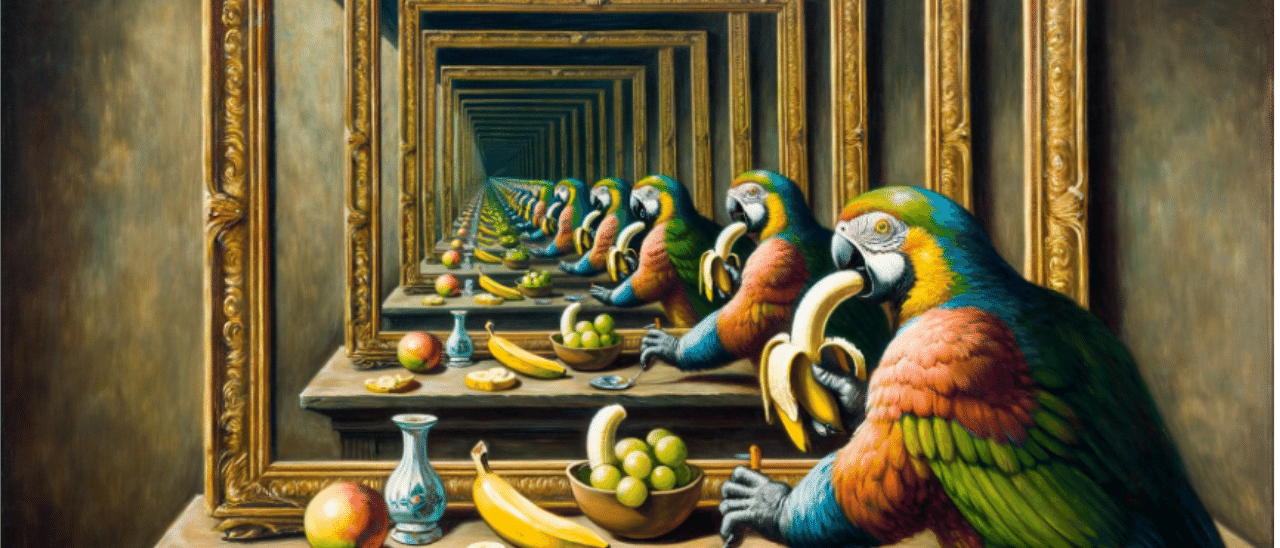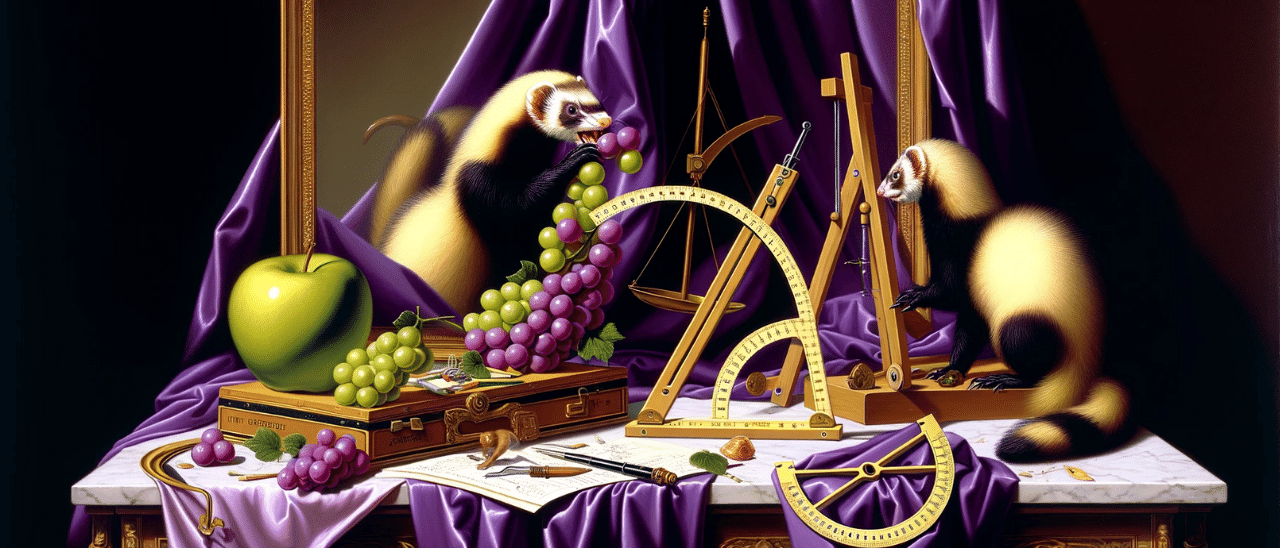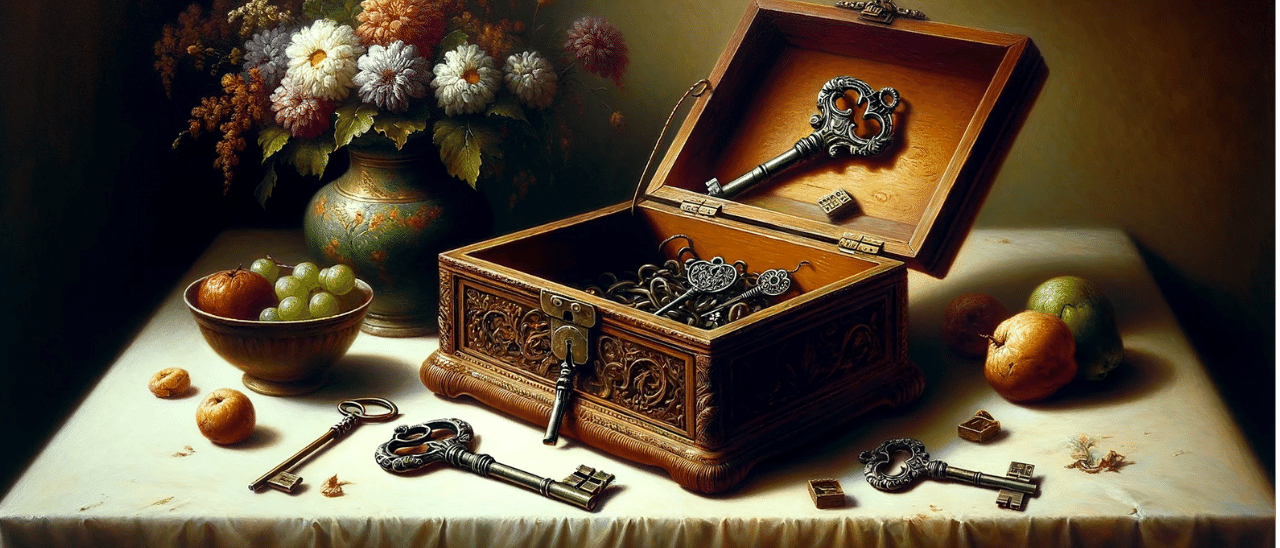I've been feeling somewhat overwhelmed recently; trying to make sense of all the rapid developments in artificial intelligence (AI) and machine learning (ML) has been doing my head in.
There is more going on than I can keep up with. There are so many new developments to discuss; so many ideas to get out of my head and share online. Sometimes there is a rising sense of panic that I will never catch up (let alone keep up); no doubt related to the fact that this is a field I have no formal training in or prior experience of.
Often, when in need of calm and comfort, we reach for a story to guide us.
Stories r Us
Stories seem to be essential: a way of sharing and explaining something about the world that we may not directly or immediately comprehend for ourselves. A good story can sometimes reassure us that though everything has changed, everything pretty much remains the same. A good story can help us deal with paradox.
Allegories then and now
One of my favourite forms of storytelling is the classic painting of a still life. For me, there's often something intriguing and disquieting in those carefully composed images of dishes, fruits and flowers (and the occasional dead animal or two).
There are three broad areas of activity in AI right now that I've been wanting to write about. First up is an assessment of the possible dangers posed by current tools such as ChatGPT4. Then there's the next generation of AI products coming out soon, which I'm keen to get ahead of. I also want to take a look even further ahead at what is sometimes referred to as "Artificial General Intelligence", which is predicted to match the problem-solving capabilities of human intelligence in full.
I covered some of those themes in my Neural Nodes update of 1st Jan; but I wanted to write about each one in more detail. I started a couple of new blog entries to catch up with what's been happening, but making progress was difficult. There's more going on than I could find the words to describe.
Then I thought: if a story is a good way to convey a lot of information in a short amount of time; and if every picture tells a story, why not try using pictures to tell some stories about what is happening in AI and ML right now?
Further: could the allegorical power of the still life help me here? And could I use the AI itself to generate those allegorical images?
At which point, the pictures took over as the focus of this update.
Three allegories of AI
I used ChatGPT 4 to create three allegories in the style of a still life. Each one tells the story of something topical related to AI and machine learning.



The first image is a personal comment on the risks posed by the current state of generative AI (tools such as ChatGPT itself): Allegory One: Why I'm not AfrAId right now.
The second picture is a summary forecast of likely upcoming developments in AI technology; what devices will we be using and why will we desire them? Allegory Two: devices and desires.
Picture three is a prediction. It's my take on the ongoing debate about one of the long-term goals of AI development: Artificial General Intelligence (AGI). It's a prediction in three parts:
Allegory Three (part 1): the illusion is real
Allegory Two (part 2): what's in the box?
(For anyone wondering, depictions of live animals are very much allowed as part of the still life tradition; see, for example, certain works by Snyders)
A postscript and a paradox
Aside from the AI allegories themselves, these images are significant to me in that they represent a particular movement towards democratising content creation. I'm no artist. I cannot draw or paint or sculpt, at least in physical media. But give me digital tools of production and watch me go. This freedom of visual expression is a sensation I never thought I'd experience, and leads to a feeling of creative satisfaction I haven't known until now. However, there is an argument that, because they are based on the skill and talent of human visual artists, all AI images are acts of plagiarism.
Are my images art, or not?
Also, there is a downside to my new happy place for self-expression. What is now easy and rewarding for me is now all so easy for someone else; someone who might be intent on creating images that mislead and deceive. Perhaps it's a similar paradox to the invention of the printing press; wherein the democratised means of content creation may also readily be used for undemocratic purposes.
Is there any story that provides a good answer to this?
[Note: they say that writing is re-writing. And that brevity is yadda yadda yadda. For the sake of editorial completeness the keen reader might be interested in an earlier, longer version of this post.]
Member discussion